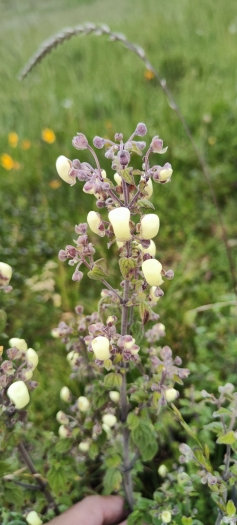Slipper Flower
(Calceolaria virgata)
Slipper Flower (Calceolaria virgata)
/
/

Luis Fer JP
CC BY 4.0
Image By:
Luis Fer JP
Recorded By:
Copyright:
CC BY 4.0
Copyright Notice:
Photo by: Luis Fer JP | License Type: CC BY 4.0 | License URL: http://creativecommons.org/licenses/by/4.0/ | Rights Holder: Luis Fer JP | Publisher: iNaturalist | Date Created: 2023-04-29T17:23:14-07:00 |






Estimated Native Range
Summary
Calceolaria virgata, commonly known as Slipper Flower, Pocketbook Plant, or Slipperwort, is a perennial herb native to the Andes in South America. It thrives in high-altitude environments, often in rocky areas and along stream banks, where it is part of the unique montane ecology. This plant typically grows at a moderate rate to a height of 1-1.5 feet (0.3-0.5 meters) and a width of 0.5-1 feet (0.2-0.3 meters). Its most striking feature is the pouch-like, yellow flowers that bloom in the spring and summer, which are quite showy and attract pollinators such as bees.
Slipper Flower is valued for its unique flower shape and bright color, which can add visual interest to rock gardens, borders, and as a container plant. It is relatively easy to maintain, provided it has the right conditions. In cultivation, it prefers full sun to part shade and requires well-drained soils, such as medium draining loam or sandy soils, with consistent moisture. While it is not a drought-tolerant plant, it does not like to be waterlogged either. There are no widely known cultivars of this species, but its distinctive flowers make it a conversation piece in any garden. Potential problems include aphids and powdery mildew, which can be managed with proper care and attention. It is not known to be invasive outside its native range, but gardeners should always monitor for unexpected spread.CC BY-SA 4.0
Slipper Flower is valued for its unique flower shape and bright color, which can add visual interest to rock gardens, borders, and as a container plant. It is relatively easy to maintain, provided it has the right conditions. In cultivation, it prefers full sun to part shade and requires well-drained soils, such as medium draining loam or sandy soils, with consistent moisture. While it is not a drought-tolerant plant, it does not like to be waterlogged either. There are no widely known cultivars of this species, but its distinctive flowers make it a conversation piece in any garden. Potential problems include aphids and powdery mildew, which can be managed with proper care and attention. It is not known to be invasive outside its native range, but gardeners should always monitor for unexpected spread.CC BY-SA 4.0
Plant Description
- Plant Type: Herb
- Height: 1-1.5 feet
- Width: 0.5-1 feet
- Growth Rate: Moderate
- Flower Color: Yellow
- Flowering Season: Spring, Summer
- Leaf Retention: Semi-deciduous
Growth Requirements
- Sun: Full Sun, Part Shade
- Water: Medium
- Drainage: Medium
Common Uses
Border Plant, Low Maintenance, Potted Plant, Rock Garden
Natural Habitat
Native to the high-altitude environments of the Andes, often along stream banks within the montane ecology
Other Names
Common Names: Pocketbook Plant, Slipperwort
Scientific Names: , Calceolaria virgata, Calceolaria cuzcoensis, Calceolaria extensa, Calceolaria forgetii, Calceolaria humilis, Calceolaria monanthos, Calceolaria triphylla, Calceolaria trivialis, Calceolaria uniflora
GBIF Accepted Name: